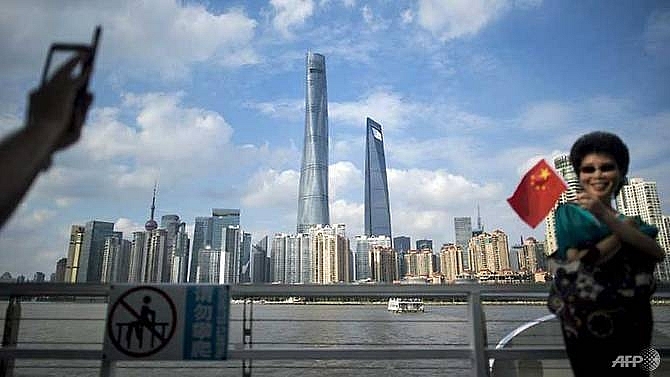Trump seeking tariffs on up to US$60b Chinese goods
 |
| The skyline of the financial district in Shanghai, China. (JOHANNES EISELE/AFP) |
A source who had direct knowledge of the administration's thinking said the tariffs, associated with a "Section 301" intellectual property investigation, under the 1974 U.S. Trade Act begun in August last year, could come "in the very near future".
While the tariffs would be chiefly targeted at information technology, consumer electronics and telecoms, they could be much broader and the list could eventually run to 100 products.
The White House declined to comment on the size or timing of any move.
Washington is targeting Chinese high technology companies to punish them for China's investment policies that effectively force U.S. companies to give up their technology secrets in exchange for being allowed to operate in the country along with other allegations of intellectual property theft.
China runs a US$375 billion trade surplus with the United States and when President Xi Jinping's top economic adviser visited Washington recently, the administration pressed him to come up with a way of reducing that number.
Trump came to office on a protectionist agenda and his first action as president was to pull the United States out of the 14-nation Pacific trade pact, known as the Trans-Pacific Partnership (TPP).
He has started talks to renegotiate the North American Free Trade Agreement (NAFTA) and most recently imposed tariffs on steel and aluminum imports.
While the tariffs on steel and aluminum, announced last week by Trump, are viewed as relatively insignificant in terms of imports and exports, moves to target China directly risk a direct and harsh response from Beijing.
The news website Politico earlier reported that the U.S. Trade Representative's office had presented Trump with a package of US$30 billion in tariffs last week, but Trump told aides that this wasn't high enough.
One business source who had discussed the issue with the White House said the figure had now grown to about US$60 billion, with a potentially wider array of products under consideration.
A second person, who is an industry lobbyist in Washington who is familiar with the administration's thinking said the process was being led by Peter Navarro, an avowed protectionist, who has accused American companies of conniving with the Chinese state, and by U.S. Trade Representative Robert Lighthizer, who also favors tariffs as a tool.
Speaking to reporters in the Capitol, U.S. House Ways and Means Committee Chairman Kevin Brady stressed that Trump was serious about addressing the issue of intellectual property theft.
"He’s serious about calling their hand on this, and my understanding is they are looking at a broad array of options to do that," Brady said.
While complaints about China's abuse of intellectual property rights are not confined to the United States, Trump's global steel and aluminum tariffs announced last week complicate Washington's efforts to recruit allies to help put pressure on China.
A China-based business source with knowledge of discussion among senior European officials said there had been a “clear effort” by the U.S. government over the past six months to introduce a coordinated approach to Chinese industrial policy, but that Trump's proposed metals tariffs under section 232 of the Trade Expansion Act of 1962 had undermined support from Europe.
"Senior Trump administration officials had directly approached European leaders at a senior level. There had been a willingness to do something together on China. That’s impossible right now. You can’t cooperate when you’re getting whacked around", the person told Reuters.
What the stars mean:
★ Poor ★ ★ Promising ★★★ Good ★★★★ Very good ★★★★★ Exceptional
 Tag:
Tag:
Related Contents
Latest News
More News
- 72 nations sign landmark Hanoi cybercrime convention (October 26, 2025 | 18:00)
- UN Secretary-General commends Vietnam’s global leadership (October 26, 2025 | 09:00)
- APEC finance ministers convene to tackle regional challenges (October 22, 2025 | 17:31)
- Rewiring global trade: ASEAN’s rise as supply chain hub (October 17, 2025 | 11:40)
- Vietnam attends first World Nuclear Week Forum in Russia (September 26, 2025 | 10:50)
- Vietnam attends 69th session of IAEA General Conference (September 16, 2025 | 10:00)
- ADB, WB pledge over 12 billion USD for ASEAN power grid, renewable energy projects (August 15, 2025 | 14:18)
- Lowy Institute proposes AI-based tobacco control solutions for ASEAN (August 15, 2025 | 14:14)
- Cloud computing policy to position Malaysia as regional hub by 2030 (August 15, 2025 | 14:11)
- Thailand, Cambodia suffer numerous cyber attacks (August 05, 2025 | 16:19)






























 Mobile Version
Mobile Version